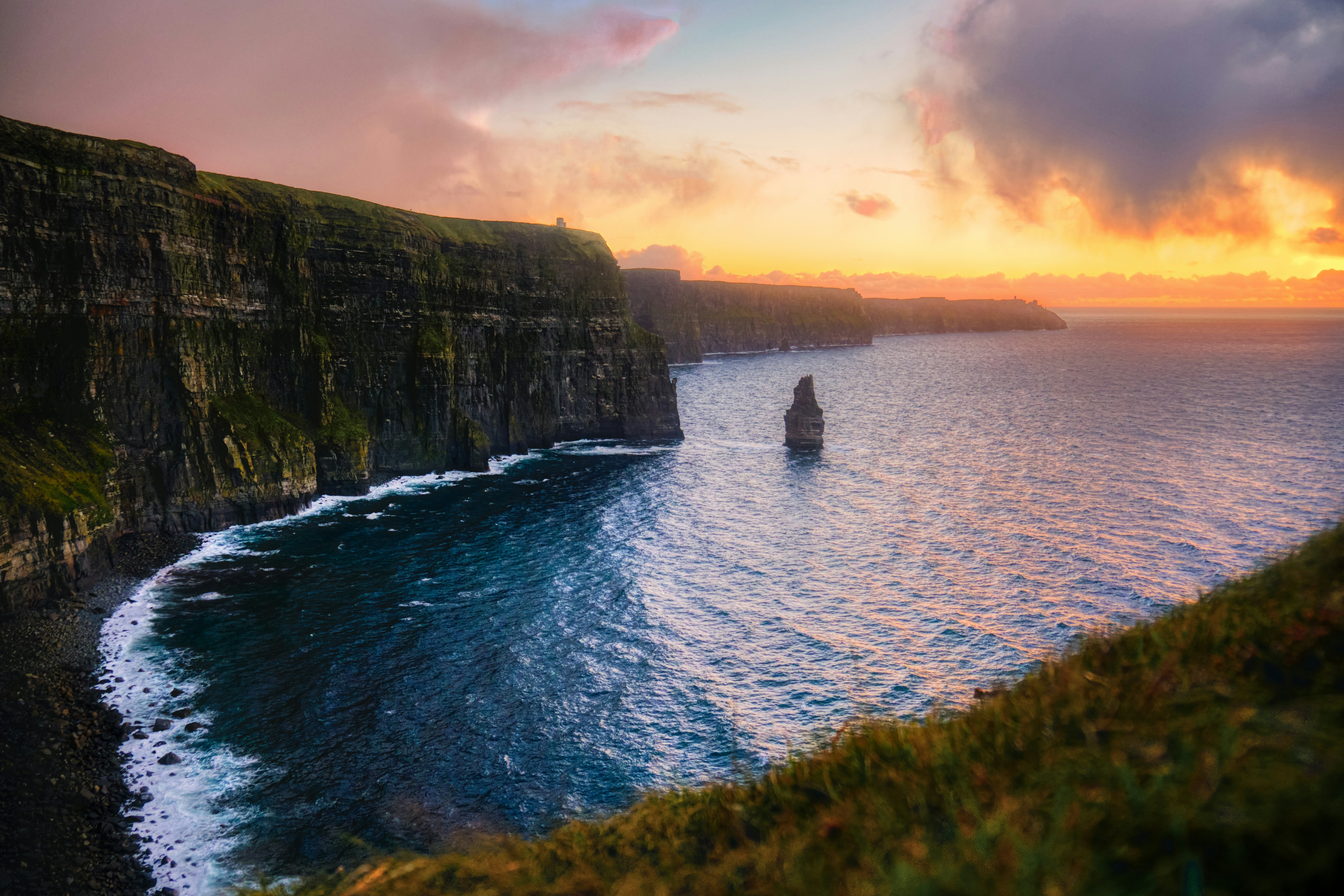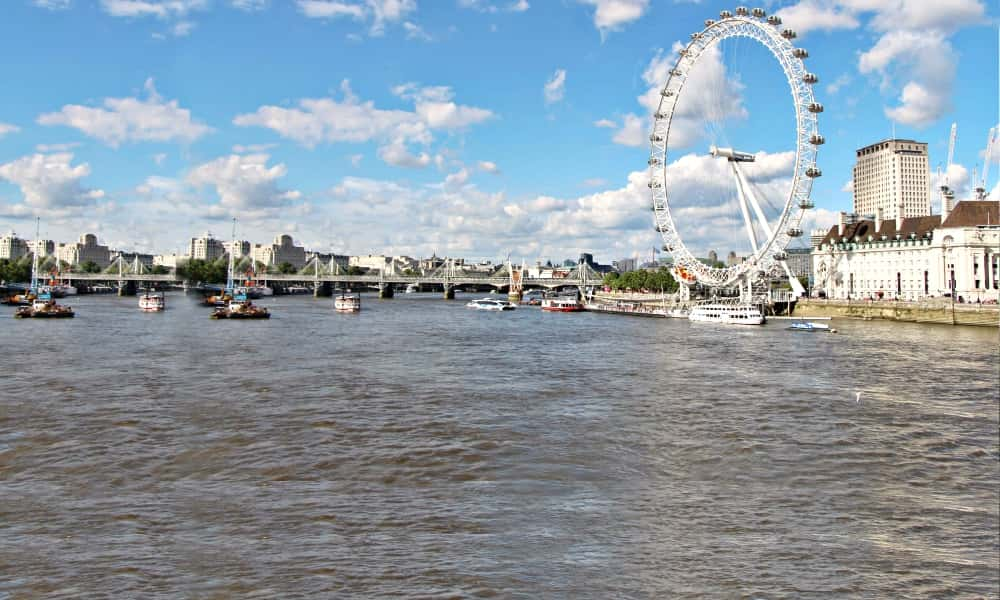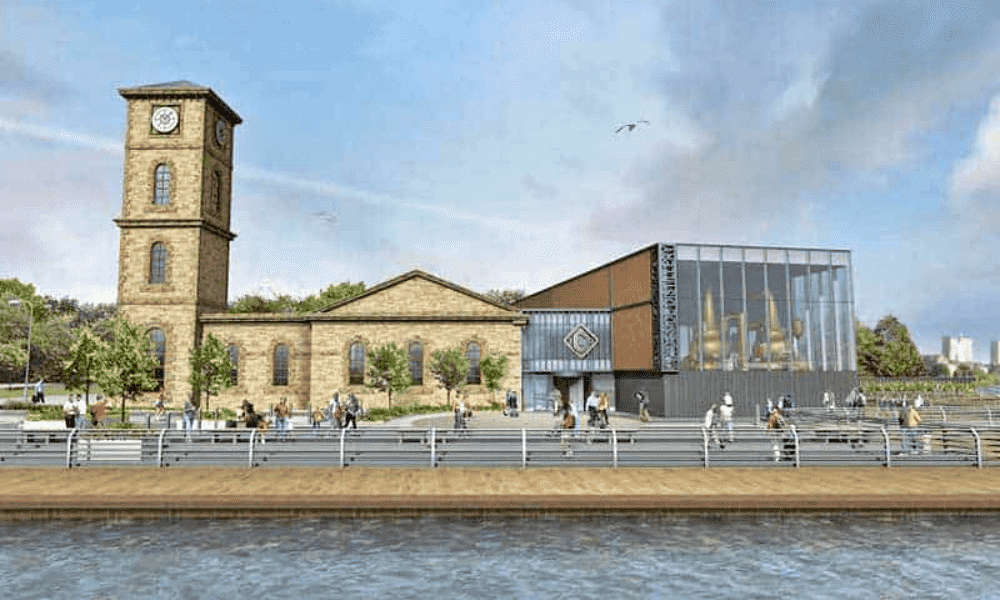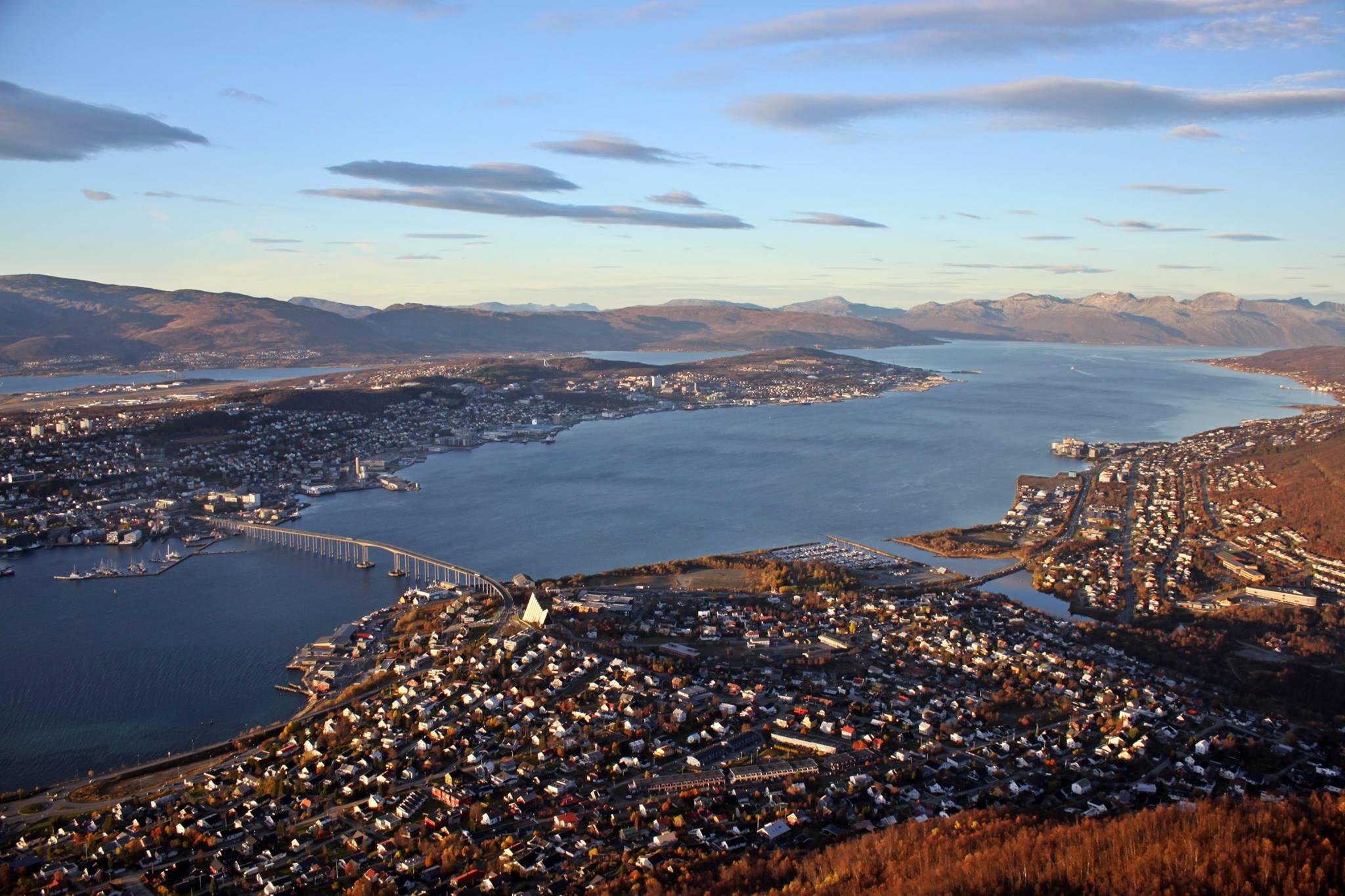Thinking of exploring the UK and Ireland? Whether it’s your first visit or a long-awaited return, this region offers a blend of ancient history, dramatic landscapes, and vibrant cities. From the buzzing streets of London to the storybook cliffs of the Irish coast, this guide gives you everything you need to plan the perfect adventure.
Why Visit the UK & Ireland?
Few places in the world combine history, culture, and natural beauty quite like the UK and Ireland. You can explore medieval castles, hike along windswept cliffs, sip whiskey by a roaring fire, and lose yourself in centuries-old streets. Each country—England, Scotland, Northern Ireland, and the Republic of Ireland—offers something unique, yet they’re easy to explore together.
Best Time to Visit
Wondering when to go? Here's a seasonal breakdown—just don’t forget to pack your umbrella. Yes, it rains. A lot. But the moody skies are part of the charm, and when the sun does peek through, it makes the landscapes even more magical. Here's what to expect in each season: when to go? Here's a seasonal breakdown:
- Spring (April–June): Flowers bloom, temperatures rise, and tourist numbers stay manageable.
- Summer (July–August): Long daylight hours and lively festivals, but expect bigger crowds.
- Autumn (September–October): Crisp air, beautiful fall colors, and lower prices.
- Winter (November–March): Great for cozy city breaks, Christmas markets, and budget travelers.
Good to Know Before You Go
- Currency: UK = British Pound (GBP); Republic of Ireland = Euro (EUR)
- Language: English is spoken throughout, with Irish and Scottish Gaelic appearing on signs.
- Visas: US, Canadian, Australian, and EU travelers can enter visa-free for short stays. However, keep in mind that the UK and Ireland may have different visa requirements.
- Transport: Rail and bus networks are excellent. Renting a car is ideal for rural Ireland and the Scottish Highlands. Day tours are also a convenient option in both Ireland and Scotland for travelers who prefer not to drive.
Getting Around in the UK & Ireland
Whether you’re hopping between cities or exploring the countryside, getting around the UK and Ireland is relatively straightforward. Here’s what you need to know:
Trains: The UK and Ireland have excellent train networks that make traveling between major cities and regions easy. In the UK, National Rail serves England, Scotland, and Wales, offering fast and frequent services to cities like London, Edinburgh, Manchester, and Cardiff. Eurostar connects London with Paris, Brussels, and beyond. In Ireland, Irish Rail operates the main rail services, including routes from Dublin to Galway, Cork, and Belfast. Train travel is a comfortable and scenic way to move around, especially if you’re heading to picturesque regions like the Scottish Highlands or the Irish coast. Be sure to book your tickets in advance for the best deals.
Buses: In addition to trains, buses provide an affordable way to travel across the UK and Ireland, with extensive routes connecting even the most remote areas. In the UK, National Express and Megabus offer budget-friendly options, while in Ireland, Bus Éireann serves most major cities and towns.
By Car: Renting a car is ideal for rural areas like the Scottish Highlands, remote parts of Wales, and rural Ireland, where train or bus options can be limited. You’ll also have the freedom to explore at your own pace. But keep in mind that driving in the UK and Ireland is on the left side of the road.
Ferries: There are several ferry routes connecting Ireland with the UK, such as Dublin to Holyhead (Wales) and Belfast to Cairnryan (Scotland). These are scenic and relaxing ways to travel between countries. Ferries also offer the option to bring your car, making it easier to continue your road trip once you reach your destination.
Top Regions to Explore
Instead of listing just cities (that you probably already know), here’s a look at the most captivating regions and experiences across the UK and Ireland, and what you can expect in each of them:
Southern England: London & Beyond
Perfect for culture seekers, first-time visitors, and lovers of British heritage. London dazzles with world-class museums, theatre, and royal landmarks, while short trips out of the city reveal the literary lanes of Oxford, the grandeur of Windsor Castle, and the idyllic countryside of the Cotswolds. A great region for those who want variety without covering too much ground.
Scottish Highlands & Islands
Made for the romantic, the road-tripper, and the adventurer. The Highlands offer some of the most spectacular natural scenery in the UK—think misty glens, mirror-like lochs, and castle ruins set against dramatic cliffs. The Isle of Skye, Glencoe, and Cairngorms National Park feel remote and raw, yet deeply atmospheric.
Western Ireland: Wild Atlantic Way
This windswept coast is pure magic for nature lovers and culture chasers. Stretching from Donegal to Cork, it weaves through charming towns like Doolin and Killarney, past the Cliffs of Moher and the Burren, with traditional music and warm pubs waiting at every stop. For travelers who want rugged beauty mixed with authentic Irish soul.
Northern Ireland’s Causeway Coast
Great for history fans, dramatic landscapes, and pop culture pilgrims. This northern stretch is home to the UNESCO-listed Giant’s Causeway, mysterious Dark Hedges, and cliffside castles like Dunluce. Add Belfast’s Titanic Quarter and rich political history for a journey that blends myth, modernity, and meaning.
Edinburgh & Central Scotland
This region blends iconic architecture with deep historical intrigue. Edinburgh charms with cobblestone alleys, hilltop views, and cultural festivals, while nearby Stirling and Linlithgow offer grand castles and royal lore. Perfect for curious travelers who love to dig into the past and enjoy walkable cities with character.
Dublin & Eastern Ireland
Vibrant, literary, and full of local color. Dublin is where tradition meets innovation—pubs with live music next to cutting-edge art galleries, Georgian squares near hip cafés. Nearby, the ancient wonders of Newgrange and Glendalough transport you back millennia. A good base for travelers who like a buzzing atmosphere with easy access to green escapes.
Unmissable Experiences in the UK & Ireland
From ancient castles to vibrant city streets, the UK and Ireland offer countless once-in-a-lifetime experiences. Whether you’re a history buff, a nature lover, or a fan of good food, here are some highlights you can’t miss during your trip:
1. Hiking the Cliffs of Moher, Ireland
One of Ireland's most iconic landmarks, the Cliffs of Moher offer breathtaking views over the Atlantic Ocean. Located on the west coast, these towering cliffs rise up to 700 feet and provide a dramatic backdrop for a scenic walk along the coastal path. Whether you're an avid hiker or just stopping for a few photos, the cliffs are a must-see for anyone visiting Ireland.
2. Taking a Thames River Cruise, London
A classic way to see London from a different perspective, a Thames River cruise offers sweeping views of landmarks like the Tower of London, the London Eye, and the Houses of Parliament. Whether you’re taking a daytime sightseeing tour or enjoying a romantic evening ride, this experience provides a unique angle on the city’s historic skyline.
3. Visiting the Giant’s Causeway, Northern Ireland
This UNESCO World Heritage site is famous for its striking, interlocking basalt columns formed by volcanic activity millions of years ago. The Giant's Causeway offers stunning views of the rugged coastline and is steeped in myth and legend. Nearby, you can also explore the Dark Hedges, another popular spot from the "Game of Thrones" series.
4. Touring Edinburgh Castle, Scotland
Perched on a volcanic rock, Edinburgh Castle is the historic heart of Scotland’s capital. Wander through the ancient fortress and explore its many chambers, including St. Margaret’s Chapel, the oldest building in Edinburgh, and the Crown Jewels of Scotland. Don't forget to check out the stunning panoramic views over the city.
5. A Traditional Pub Crawl in Dublin, Ireland
No trip to Ireland is complete without a visit to its lively pubs. Dublin’s Temple Bar district is the epicenter of the city's vibrant pub scene, where you can enjoy traditional Irish music, hearty pints of Guinness, and friendly local chatter. A pub crawl in Dublin gives you a true taste of Irish hospitality and culture.
6. Exploring the Scottish Highlands by Car
One of the most scenic drives in the world, the journey through the Scottish Highlands offers sweeping views of dramatic mountains, shimmering lochs, and deep glens. Whether you’re heading towards Glencoe, the Isle of Skye, or Loch Ness, every corner reveals a new slice of wild beauty. This road trip is perfect for those who want to explore Scotland’s nature at their own pace.
7. Visiting Stonehenge, England
An ancient and enigmatic stone circle, Stonehenge is one of the world’s most famous prehistoric monuments. Located in Wiltshire, this iconic site has mystified visitors for centuries. Explore the visitor center, learn about its history, and marvel at the arrangement of the stones—an experience that feels both otherworldly and timeless.
8. Taking a Whiskey Tasting Tour in the Scottish Highlands
Scotland is famous for its whiskey, and a tasting tour at one of its historic distilleries is a must for any enthusiast. Discover the process behind Scotland’s finest single malts and indulge in a tasting session. You’ll gain insight into the centuries-old tradition of whiskey-making and sample some of the finest spirits in the world.
Sample Itineraries to Get You Started
- 14-Day UK & Ireland Highlights Tour
Travel Planning Tips
To make your trip to the UK and Ireland as smooth as possible, here are some practical travel tips:
Currency & Payment Systems
- UK: The currency is the British Pound (GBP). Most places accept credit and debit cards (Visa and MasterCard are widely used), and contactless payments like Apple Pay and Google Pay are common. ATMs are readily available, but be mindful of withdrawal fees, especially if you’re using an international bank card.
- Ireland: The Euro (EUR) is used in the Republic of Ireland, while Northern Ireland uses the British Pound. The payment systems are similar to the UK, with widespread card acceptance and contactless options. ATMs are also plentiful in cities and towns.
- Cash Tips: It's a good idea to have a small amount of cash for tips or smaller purchases, but you’ll likely rely more on cards for most expenses. You can withdraw local currency from ATMs upon arrival or exchange money at airports or in city centers.
Meal Costs
- Budget: A simple meal from a takeaway or food stall might cost £5-£10 GBP in the UK or €12-€15 EUR in Ireland.
- Mid-Range: Dining at a casual restaurant could cost around £15-£30 GBP in the UK or €18-€30 EUR in Ireland for a two-course meal.
- Fine Dining: Fine dining can range from £40-£100 GBP per person in the UK and €40-€80 EUR in Ireland for a multi-course experience.
- If you’re on a budget, try local markets or food trucks for delicious yet affordable meals.
Tipping Culture
Tipping isn’t mandatory but is appreciated for good service. In restaurants, a 10-15% tip is standard, though many places may include a service charge. Taxi drivers and bartenders generally expect 10% or rounding up the bill.
Connectivity & Internet
Free public Wi-Fi is common in cafes, restaurants, and public spaces. However, it can be unreliable in rural areas. Consider purchasing a local SIM card or using an eSIM for affordable data and calls, especially if you plan to travel outside major cities.
Packing Tips
The weather in the UK and Ireland can be unpredictable, so pack for all conditions:
- Rain gear is essential (rain jacket, umbrella).
- Comfortable shoes are a must for exploring cobblestone streets.
- Layering is key—bring t-shirts, sweaters, and a coat for the cooler evenings, especially in the Scottish Highlands or rural areas.
Electrical Plugs
The UK and Ireland use the Type G electrical plug with three rectangular prongs, so bring an adapter if your devices have different plug types. The standard voltage is 230V.
Health & Safety
Both the UK and Ireland are safe for tourists, but keep an eye on your belongings, especially in busy tourist areas. For medical needs, dial 999 in the UK or 112 in Ireland for emergency services. Pharmacies are widely available, and larger cities have international clinics for more specialized care.
Plan Your UK & Ireland Adventure
Use this guide as your starting point for a UK and Ireland trip that’s easy, memorable, and packed with highlights. Dive into our detailed itineraries and destination posts to design a journey that fits your travel style—from city lovers to nature seekers, history buffs to roadtrippers.























